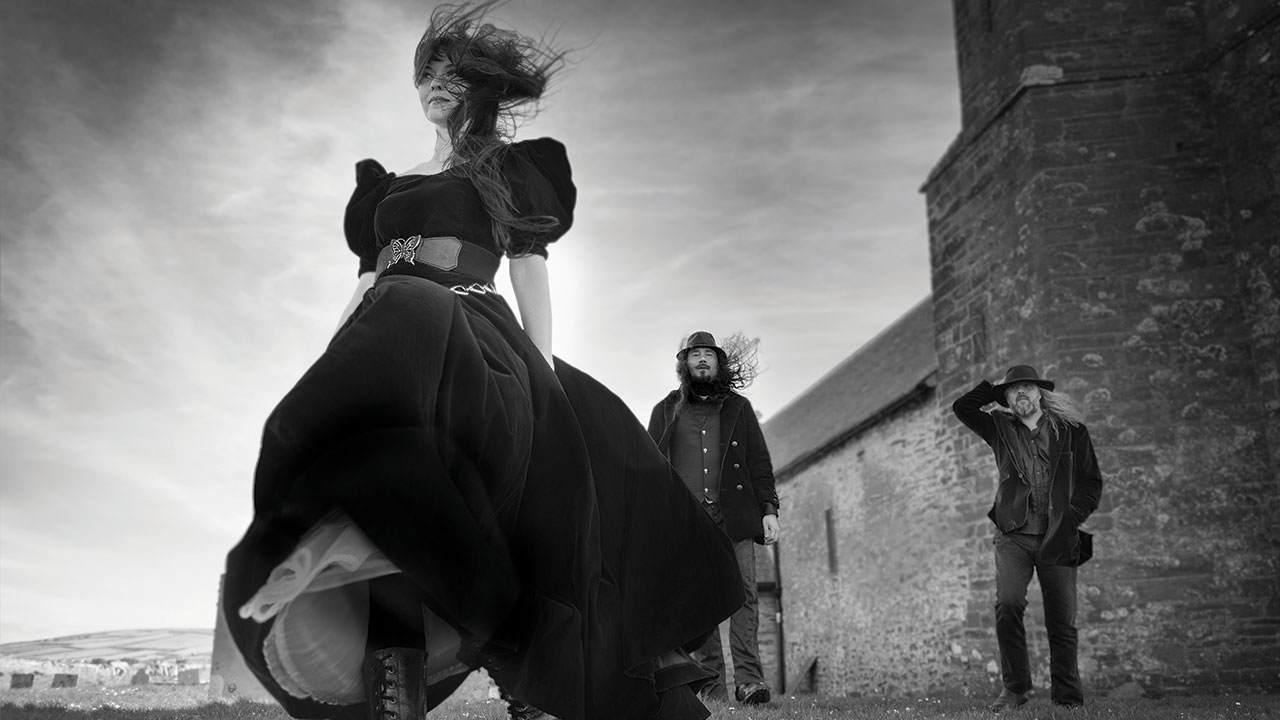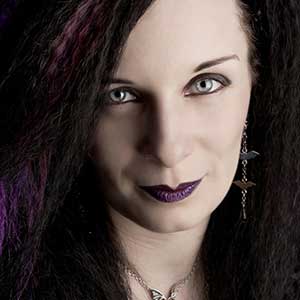What happened when Nightwish's Tuomas Holopainen and Troy Donockley formed Auri
In 2018, Nightwish's Tuomas Holopainen and Troy Donockley teamed up with Finnish singer Johanna Kurkela on Auri's first album - here's what happened

For centuries, the Cornish coastline has inspired creativity, from the legends of King Arthur and Merlin to the paintings of Anne Sudworth and Peter Pracownik, whose artwork has decorated Oliver Wakeman and Hawkwind album covers respectively. And now Auri have fallen under its misty spell.
“The photo shoot was so inspirational for the composing process,” reveals Tuomas Holopainen, his voice full of awe. “Just being in Cornwall, in those surroundings and seeing some actual photos being taken of us really helped to get the whole process moving.”
“We do recommend that to other bands: do the promo shoot first!” Troy Donockley adds.
It’s a grey and wet Monday afternoon when Prog catches up with keyboardist Holopainen, multi-instrumentalist Donockley and vocalist Johanna Kurkela, not in Cornwall, but in a London bar. As the trio settle on vintage sofas, the chemistry between them becomes apparent. There are no arguments during the interview and they’re so excited about their new album that they frequently finish each other’s sentences. As Holopainen maintains several times, Auri are a real band, not a side-project and their insistence on being interviewed as a three-piece reinforces this.
Auri’s seeds were sown in 2011 when Kurkela and Donockley wrote Aphrodite
Rising with a view to working together on a full album. The stars didn’t quite align
and the collaboration remained on hold until Nightwish’s hiatus last year. With
time on their side, the pair dusted down their demos and invited Holopainen, who is Kurkela’s husband, to join them. So what was it that transformed Auri from a pipe dream to reality?
Without hesitating, Donockley points at Holopainen. “It was him!”
The keyboard player looks genuinely surprised and asks, “What did I do?” Donockley explains, “All three of us wanted to do something and it just so happened that the thing that Johanna and I worked on was a springboard for development. Aphrodite Rising had certain templates – the melding together of atmospheric, wordless ideas with melodic, catchy lyrics – that caused Auri to be born. When Tuomas came in as well, it became more of a viable and committed direction for all three of us to take.”
Sign up below to get the latest from Prog, plus exclusive special offers, direct to your inbox!
“Auri was like turning a blank page and discovering a world that was completely new and boundary-less,” offers Kurkela. “It’s the soundscape of our friendship.”
Holopainen adds, “We wanted to create the music that’s missing from this world.”
Their name symbolises light and optimism. Auri comes from the word ‘aura’; it’s also part of Kurkela’s middle name and the name of a character in Patrick Rothfuss’ fantasy series, Kingkiller Chronicles. Holopainen dismisses the idea of Auri being a concept album, but it’s clear the author’s work has had a profound effect on both him and his wife. Not only are there references to the series throughout, but he has also namechecked the Chronicles’ travelling entertainers the Edema Ruh on Nightwish’s Endless Forms Most Beautiful.
“The way Patrick Rothfuss writes is like poetry,” swoons Kurkela. “The way he describes the landscapes, and the worlds he creates, just drew me in. The main character is a musician and the way he describes music and playing… I think he’s come very close to describing the mystery of music.”
Auri’s brand of cosmic rock is just as mysterious. It fuses Donockley’s unique instrumentation and Holopainen’s cinematic grandeur with Kurkela’s delicate viola and melodic vocals – she also sang on her husband’s solo album Music Inspired By The Life And Times Of Scrooge. Her broad range and distinctive lilt add an otherworldly feel to the music. Like Nightwish’s folkier interludes, Auri’s sound often has a very intimate feel, none more so than on the album’s unexpected closer Them Thar Chanterelles.
“That was her walking out into the forest, picking mushrooms,” says Donockley, nodding towards Kurkela. “We knew that would be the perfect coda for the album; it’s like a joyous afterthought in the journey.”
Holopainen offers a glimpse into his private life: “We were just picking chanterelle mushrooms and she started humming…”
The trio hum the song’s melody in perfect harmony and Donockley continues, “Tuomas put some sublime harmonisations on it and it naturally seemed to fall into a celebratory festival of auld dance-style music. Johanna improvised over it in such a wild and wonderful way that it really complemented the spirit of a woman alone in the forest, and she’s joined by the whole forest. Everybody’s singing and dancing, the leaves themselves are the harmony vocals, and the stars too.”
He leans forward and adds with a wink, “There’s a secret dance tune in there as well but that’s only for the cognoscente. We’re hoping that someone somewhere will say, ‘Wow, I don’t believe it!’”
It’s a world apart from Floor Jansen’s Amazonian battle cries in Nightwish, but light and optimism are what Auri are about. It’s fitting that the album should be mixed at Peter Gabriel’s magical Real World Studios.
“Johanna was saying there’s a symbolism to the place,” says Donockley. “You have to walk over a bridge to enter the studio and it’s like passing from one world to another.”
That’s a metaphor that could equally be made of Holopainen and Donockley’s current lives. When Auri came out, the pair were midway through the US leg of Nightwish’s Decades tour, which does raise the question of why the album has been released now.
“It was the record company’s decision,” says Donockley with a shrug. “I wish that Auri could have been released when we were at home, but we trust Nuclear Blast. We really wanna tour the album though.”
Holopainen and Kurkela make noises of agreement, but it seems an Auri tour is
still a few years away. The plan is to release a second album after the next Nightwish cycle, and then they’ll have enough material to head out to play at…
“Tintagel Castle [in Cornwall],” says the keyboard player without any hesitation. “It’s going to happen for sure at some point.”
“Or maybe somewhere like Castlerigg Stone Circle in Cumbria. Imagine doing that!” adds Donockley.
“That would be something,” says Holopainen, and Kurkela nods.
As Prog leaves the band dreaming of their Arthurian quest and heads back out into the busy city, the grey clouds part and the faintest of rainbows spreads across the sky.

Contributing to Prog since the very first issue, writer and broadcaster Natasha Scharf was the magazine’s News Editor before she took up her current role of Deputy Editor, and has interviewed some of the best-known acts in the progressive music world from ELP, Yes and Marillion to Nightwish, Dream Theater and TesseracT. Starting young, she set up her first music fanzine in the late 80s and became a regular contributor to local newspapers and magazines over the next decade. The 00s would see her running the dark music magazine, Meltdown, as well as contributing to Metal Hammer, Classic Rock, Terrorizer and Artrocker. Author of music subculture books The Art Of Gothic and Worldwide Gothic, she’s since written album sleeve notes for Cherry Red, and also co-wrote Tarja Turunen’s memoirs, Singing In My Blood. Beyond the written word, Natasha has spent several decades as a club DJ, spinning tunes at aftershow parties for Metallica, Motörhead and Nine Inch Nails. She’s currently the only member of the Prog team to have appeared on the magazine’s cover.
